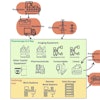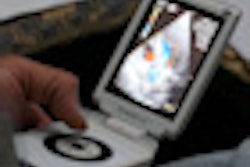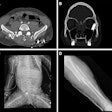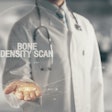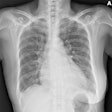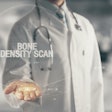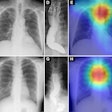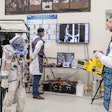Digital x-ray technology is breathing new life into efforts to improve the developing world's access to imaging technology. A new nonprofit organization called the World Health Imaging Alliance (WHIA) was formed this month to coordinate efforts to bring medical imaging to where it's most needed.
For decades, civic-minded radiology professionals and public health advocates have been trying to address a critical lack of access to imaging technology in the developing world. It's estimated that two-thirds of the world's population doesn't have adequate access to imaging technology, and better access to imaging is one of the top four global healthcare priorities set by the World Health Organization (WHO), according to John Vanden Brink, a longtime imaging executive and member of nonprofit group Rotary International who's involved in the WHIA project.
Past efforts to address the need for imaging have been scattershot. Twenty-five years ago, the WHO implemented its World Health Imaging System for Radiology (WHIS-RAD) initiative, which defined a set of specifications for a radiography system that's rugged and easy to use. Several radiography vendors have developed WHIS-RAD systems, but there have been a number of barriers that have prevented the success of the project.
For one, most efforts to place WHIS-RAD units have been conducted on an ad hoc basis, with volunteer groups trying to coordinate installations with local authorities. Another obstacle is that without an organized structure to oversee installations, equipment sometimes goes out of service permanently if it isn't repaired following a breakdown. Finally, analog radiography presents cost and operational issues when compared to digital, due to the need for film, chemicals, and other consumable supplies. These can add $3 to $4 to the cost of each exam -- a considerable amount in the developing world.
The World Health Imaging Alliance hopes to address all of these shortcomings. The Chicago-based group plans to direct the efforts to match donors, vendors, and volunteers with recipient sites, providing the initiative with more focus than what was possible with volunteer groups. In addition, the WHIA plans to concentrate on installing digital radiography rather than analog systems.
Benefits of digital
Digital x-ray confers a number of benefits when it comes to operating in developing countries, Vanden Brink said. In addition to no longer requiring consumable supplies, digital x-ray enables healthcare practitioners to quickly generate images while the patient is at the clinic and to begin treatment if necessary. That's an important consideration in areas where patients sometimes have to walk hours or days to reach the nearest clinic.
Digital technology also addresses the thorny issue of image archiving. Many clinics at remote sites don't have film storage areas, and patients frequently are simply given the films of their analog radiography studies to take home.
Perhaps most important is the ease of image distribution possible with digital x-ray. Many clinics and small hospitals in remote areas do not have radiologists onsite; digital exams can easily be sent via teleradiology link to a centralized location, such as a university or tertiary care center in a country's capital city, where they can be reviewed by expert radiologists.
The WHIA's digital plans focus on computed radiography, which is a low-cost and stable technology. The organization plans to match radiography units manufactured to WHIS-RAD specifications by Spanish x-ray vendor Sedecal of Madrid with computed radiography systems from Carestream Health of Rochester, NY. Imaging software developer Merge Healthcare of Milwaukee has agreed to provide a version of its MergeBox that's optimized to provide all of a remote facility's image review and management needs in a single box.
Getting it done
The WHIA now has vendor partnerships in place, funding in hand through a recent donation from a philanthropic organization, and a management team led by CEO Ivy Walker. Now comes the hard part -- finding locations that have the right combination of need and local support to make an imaging operation viable. Especially key is a local university in the host country that can help oversee the installation.
Once a site is identified, the WHIA has partnered with Northwestern University of Chicago, where students in the department of biomedical engineering have volunteered to travel to prospective locations to conduct site evaluations. Ironically, sites with no imaging equipment at all are often better than clinics that have some imaging capability that will need to be retrofitted, Vanden Brink said. The WHIA is working with international charity organization Rotary International to identify potential candidates.
One such candidate has been identified in Guatemala, and Rotary International has raised funds to install a system at a pilot site this summer. WHIA is collecting funds to send a team of Northwestern students to the country to survey up to 25 additional sites for systems if the pilot proves to be successful. This model could work in other countries, according to Vanden Brink.
Ultimately, the WHIA's goal is to place 20,000 imaging systems to cover a population of 1 billion people, based on the calculation that each machine can serve 50,000 patients. The company hopes to cement additional partnerships with imaging vendors, sign on more academic affiliations, and raise additional funds. Offers to help -- or requests to receive a system -- can be directed through the WHIA Web site.
"Diagnostic imaging is an essential part of primary healthcare," Walker said. "There are a lot of conditions that are difficult to diagnose without taking an x-ray. So if you don't have access to imaging in large parts of the world, then you are missing a very key opportunity to improve the health of large portions of the global population."
By Brian Casey
AuntMinnie.com staff writer
April 15, 2009
Related Reading
World Health Imaging launches global mission, April 6, 2009
In a spirit of giving: Medical donations make a difference, November 21, 2006
All hands on deck: How radiological staff can help on hospital ships, November 21, 2006
Siemens makes multimillion-dollar donation to Clinton initiative, September 21, 2006
UnitedHealthcare, Oxford Health Plans donate imaging equipment, August 31, 2006
Copyright © 2009 AuntMinnie.com



